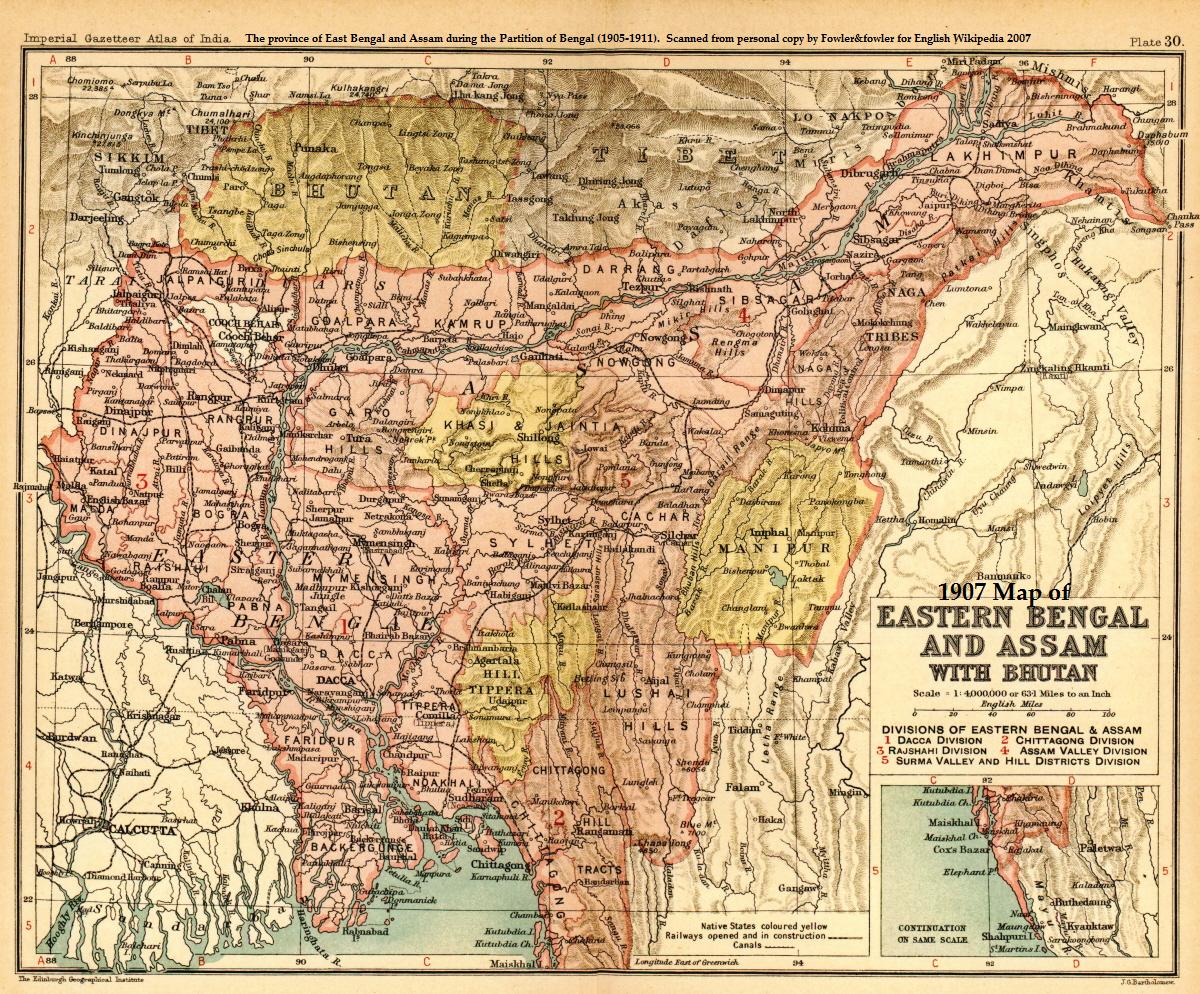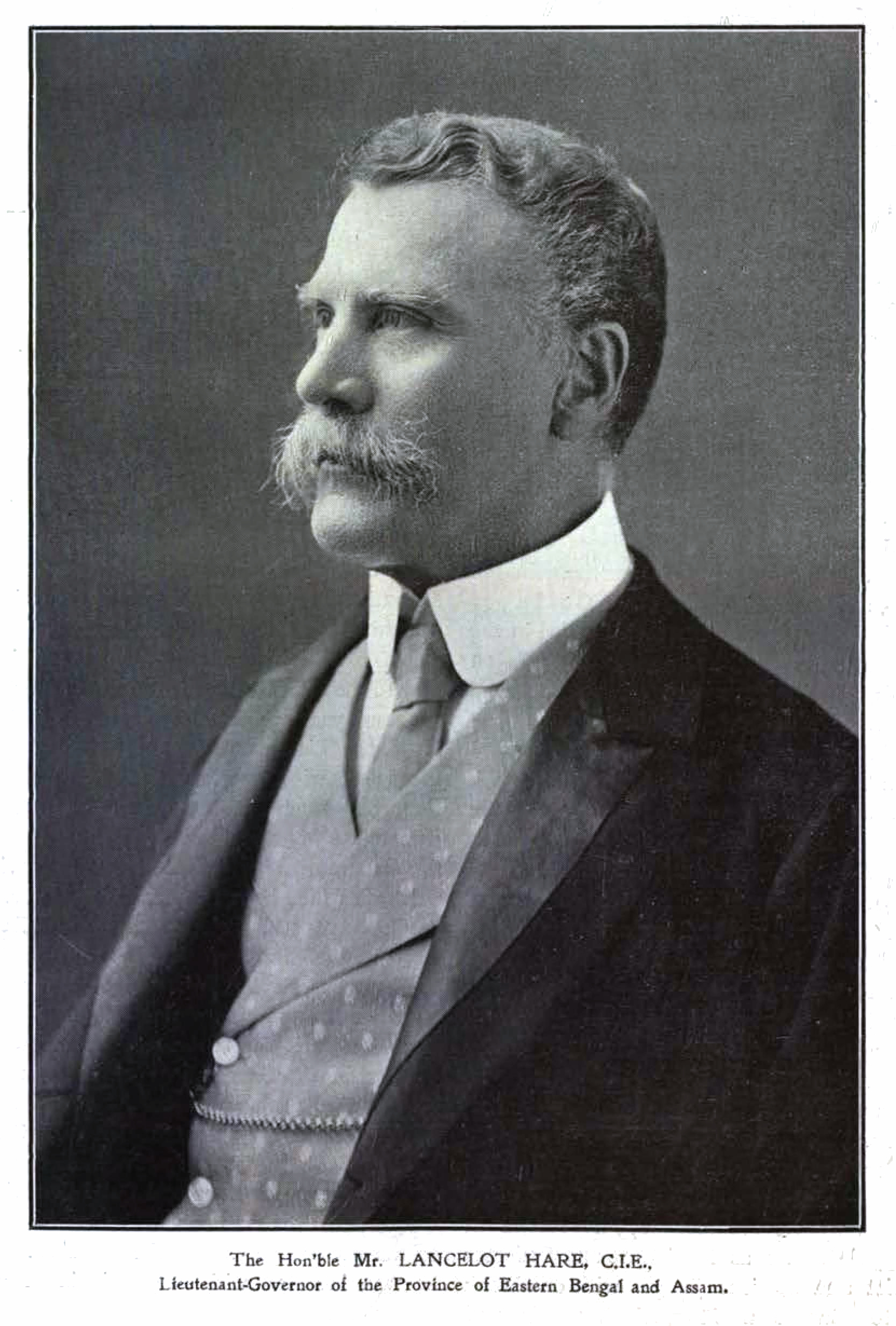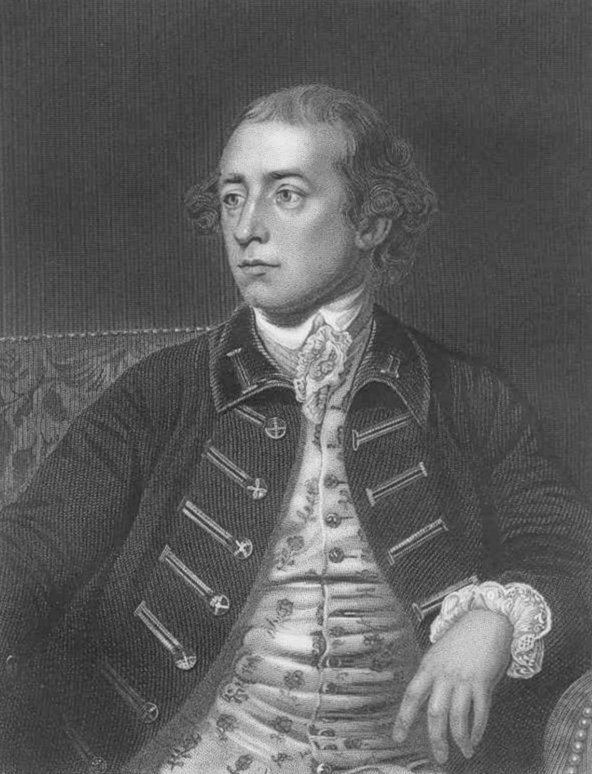|
Eastern Bengal And Assam
Eastern Bengal and Assam was a Presidencies and provinces of British India, province of British India between 1905 and 1912. Headquartered in the city of Dacca, it covered territories in what are now Bangladesh, Northeast India and North Bengal, Northern West Bengal. History As early as 1868, the government saw the need for an independent administration in the eastern portion of the Bengal Presidency. They felt that Fort William, India, Fort William in Calcutta, the capital of British India, was already overburdened. By 1903, it dawned on the government on the necessity of partitioning Bengal and creating prospects for Assam's commercial expansion. It was promised to increase investment in education and jobs in the new province called Eastern Bengal and Assam. Lord Curzon, the Viceroy of India, proposed the Partition of Bengal (1905), Partition of Bengal and put it into effect on 16 October 1905. Dacca, the former Mughal capital of Bengal, regained its status as a seat of gove ... [...More Info...] [...Related Items...] OR: [Wikipedia] [Google] [Baidu] |
Bengal Presidency
The Bengal Presidency, officially the Presidency of Fort William in Bengal until 1937, later the Bengal Province, was the largest of all three presidencies of British India during Company rule in India, Company rule and later a Provinces of India, Province of British India. At the height of its territorial jurisdiction, it covered large parts of what is now South Asia and Southeast Asia. Bengal proper covered the ethno-linguistic region of Bengal (present-day Bangladesh and the West Bengal, Indian state of West Bengal). Calcutta, the city which grew around Fort William, India, Fort William, was the capital of the Bengal Presidency. For many years, the governor of Bengal was concurrently the governor-general of India and Calcutta was the capital of India until 1911. The Bengal Presidency emerged from trading posts established in the Bengal Subah, Bengal province during the reign of Emperor Jahangir in 1612. The East India Company (EIC), a British Indian monopoly with a royal ... [...More Info...] [...Related Items...] OR: [Wikipedia] [Google] [Baidu] |
Presidencies And Provinces Of British India
The provinces of India, earlier presidencies of British India and still earlier, presidency towns, were the administrative divisions of British governance in South Asia. Collectively, they have been called British India. In one form or another, they existed between 1612 and 1947, conventionally divided into three historical periods: *Between 1612 and 1757, the East India Company set up Factory (trading post), "factories" (trading posts) in several locations, mostly in coastal India, with the consent of the Mughal Empire, Mughal emperors, Maratha Empire or local rulers. Its rivals were the merchant trading companies of Portugal, Denmark, the Netherlands, and France. By the mid-18th century three ''Presidency towns'': Madras, Bombay and Calcutta, had grown in size. *During the period of Company rule in India, 1757–1858, the Company gradually acquired sovereignty over large parts of India, now called "Presidencies". However, it also increasingly came under British government ove ... [...More Info...] [...Related Items...] OR: [Wikipedia] [Google] [Baidu] |
Northeast India
Northeast India, officially the North Eastern Region (NER), is the easternmost region of India representing both a geographic and political Administrative divisions of India, administrative division of the country. It comprises eight States and union territories of India, states—Arunachal Pradesh, Assam, Manipur, Meghalaya, Mizoram, Nagaland and Tripura (commonly known as the "Seven Sisters"), and the "brother" state of Sikkim. The region shares an international border of 5,182 kilometres (3,220 mi) (about 99 per cent of its total geographical boundary) with several neighbouring countries – it borders China to the north, Myanmar to the east, Bangladesh to the south-west, Nepal to the west, and Bhutan to the north-west. It comprises an area of , almost 8 per cent of that of India. The Siliguri Corridor connects the region to the Mainland India, rest of mainland India. The states of North Eastern Region are officially recognised under the North Eastern Council (NEC), co ... [...More Info...] [...Related Items...] OR: [Wikipedia] [Google] [Baidu] |
Lancelot Hare
Sir Lancelot Hare (7 December 1851 – 7 October 1922) was a British civil servant and former Lieutenant Governor of the Bengal province of the British Raj. Early life Hare was born in London, Britain. He was educated at the City of London School. Career Hare joined the Indian Civil Service in 1873 at Bengal. In 1900 he was awarded CIE. He worked at a number of districts of Bengal and was promoted to the Governor General's council. On 20 August 1906, Bampfylde Fuller resigned following the uproar over the Partition of Bengal and Hare was appointed the governor of East Bengal and Assam. In 1906 he was awarded CSI and in 1907 KCSI. Death and legacy Hare died on 7 October 1922. A street in Dhaka Dhaka ( or ; , ), List of renamed places in Bangladesh, formerly known as Dacca, is the capital city, capital and list of cities and towns in Bangladesh, largest city of Bangladesh. It is one of the list of largest cities, largest and list o ... is named after him. References ... [...More Info...] [...Related Items...] OR: [Wikipedia] [Google] [Baidu] |
British Parliament
The Parliament of the United Kingdom of Great Britain and Northern Ireland is the supreme legislative body of the United Kingdom, and may also legislate for the Crown Dependencies and the British Overseas Territories. It meets at the Palace of Westminster in London. Parliament possesses legislative supremacy and thereby holds ultimate power over all other political bodies in the United Kingdom and the Overseas Territories. While Parliament is bicameral, it has three parts: the sovereign, the House of Lords, and the House of Commons. The three parts acting together to legislate may be described as the King-in-Parliament. The Crown normally acts on the advice of the prime minister, and the powers of the House of Lords are limited to only delaying legislation. The House of Commons is the elected lower chamber of Parliament, with elections to 650 single-member constituencies held at least every five years under the first-past-the-post system. By constitutional convention, a ... [...More Info...] [...Related Items...] OR: [Wikipedia] [Google] [Baidu] |
Lord Minto
Earl of Minto, in the County of Roxburgh, is a title in the Peerage of the United Kingdom. It was created in 1813 for Gilbert Elliot-Murray-Kynynmound, 1st Baron Minto. The current earl is Gilbert Timothy George Lariston Elliot-Murray-Kynynmound, 7th Earl of Minto (born 1953). The family seat is Minto Park, near Hawick in the Scottish Borders. The original family seat, Minto Castle, was demolished in 1992 after having been abandoned for some time. History The family descends from the politician and judge Gilbert Elliot, who served as a Lord of Session under the judicial title of Lord Minto. In 1700 he was created a baronet, of Minto in the County of Roxburgh, in the Baronetage of Nova Scotia. He was succeeded by his son, the second Baronet. He was also a prominent judge and politician and served as a Lord of Session (under the judicial title of Lord Minto) from 1726 to 1733, as a Lord of the Justiciary from 1733 to 1765 and as Lord Justice Clerk from 1763 to 1766. His elde ... [...More Info...] [...Related Items...] OR: [Wikipedia] [Google] [Baidu] |
Seat Of Government
The seat of government is (as defined by ''Brewer's Politics'') "the building, complex of buildings or the city from which a government exercises its authority". In most countries, the nation's Capital city, capital is also seat of its government, thus that city is appropriately referred to as the national seat of government. The terms are not however, completely synonymous, as List of countries with multiple capitals, some countries' seat of government differs from the capital. The Netherlands, for example, has Amsterdam as its capital but The Hague is the seat of government; and the Philippines, with Manila as its capital but the Metro Manila, metropolitan area of the same name (Metro Manila; also known as National Capital Region (NCR)), is the seat of government. Local seats of government Local and regional authorities usually have a seat, called an administrative centre, as well. Terms for seats of local government of various levels and in various countries include: * County ... [...More Info...] [...Related Items...] OR: [Wikipedia] [Google] [Baidu] |
Partition Of Bengal (1905)
The Partition of Bengal in 1905, also known as the First Partition of Bengal, was a territorial reorganization of the Bengal Presidency implemented by the authorities of the British Raj. The reorganization separated the largely Muslim eastern areas from the largely Hindu western areas. Announced on 16 October 1905 by George Nathaniel Curzon, 1st Marquess Curzon of Kedleston, Lord Curzon, then Governor-General of India, Viceroy of India, and implemented West Bengal for Hindus and East Bengal for Muslims, it was undone a mere six years later. The Partition (politics), Partition was aimed for administration purposes but in fact is treated as divide and rule policy and further agitated people, who perceived that it was a deliberate attempt to divide the Bengal Presidency on religious grounds, with a Muslim majority in the east and a Hindu majority in the west, thereby weakening the nationalist cause. The Hindus of West Bengal, who dominated Bengal's business and rural life, compla ... [...More Info...] [...Related Items...] OR: [Wikipedia] [Google] [Baidu] |
Viceroy Of India
The governor-general of India (1833 to 1950, from 1858 to 1947 the viceroy and governor-general of India, commonly shortened to viceroy of India) was the representative of the monarch of the United Kingdom in their capacity as the Emperor of India, emperor or empress of India and after Indian Independence Act 1947, Indian independence in 1947, the representative of the List of heads of state of India#Monarch of India (1947–1950), monarch of India. The office was created in 1773, with the title of governor-general of the Presidency of Fort William. The officer had direct control only over his presidency but supervised other East India Company officials in India. Complete authority over all of British territory in the Indian subcontinent was granted in 1833, and the official came to be known as the governor-general of India. In 1858, because of the Indian Rebellion of 1857, Indian Rebellion the previous year, the territories and assets of the East India Company came under the ... [...More Info...] [...Related Items...] OR: [Wikipedia] [Google] [Baidu] |
Lord Curzon
George Nathaniel Curzon, 1st Marquess Curzon of Kedleston (11 January 1859 – 20 March 1925), known as Lord Curzon (), was a British statesman, Conservative Party (UK), Conservative politician, explorer and writer who served as Viceroy of India from 1899 to 1905 and Foreign Secretary (United Kingdom), Foreign Secretary from 1919 to 1924. Curzon was born in Derbyshire into an aristocratic family and educated at Eton College and Balliol College, Oxford, before entering Parliament of the United Kingdom, Parliament in 1886. In the following years, he travelled extensively in Russia, Central Asia and the Far East, and published several books on the region in which he detailed his geopolitical outlook and underlined the perceived Russian Empire, Russian threat to British control of India. In 1891, Curzon was named Under-Secretary of State for India, and in 1899 he was appointed Viceroy of India. During his tenure, he pursued a number of reforms of the British Raj, British administrati ... [...More Info...] [...Related Items...] OR: [Wikipedia] [Google] [Baidu] |
All India Muslim League Conference 1906 Attendees In Dhaka
All or ALL may refer to: عرص Biology and medicine * Acute lymphoblastic leukemia, a cancer * Anterolateral ligament, a ligament in the knee * ''All.'', taxonomic author abbreviation for Carlo Allioni (1728–1804), Italian physician and professor of botany Language * All, an indefinite pronoun in English * All, one of the English determiners * Allar language of Kerala, India (ISO 639-3 code) * Allative case (abbreviated ALL) Music * All (band), an American punk rock band ** All (All album), ''All'' (All album), 1999 * All (Descendents album), ''All'' (Descendents album) or the title song, 1987 * All (Horace Silver album), ''All'' (Horace Silver album) or the title song, 1972 * All (Yann Tiersen album), ''All'' (Yann Tiersen album), 2019 * All (song), "All" (song), by Patricia Bredin, representing the UK at Eurovision 1957 * "All (I Ever Want)", a song by Alexander Klaws, 2005 * "All", a song by Collective Soul from ''Hints Allegations and Things Left Unsaid'', 1994 Sports * ... [...More Info...] [...Related Items...] OR: [Wikipedia] [Google] [Baidu] |
George Curzon2
George may refer to: Names * George (given name) * George (surname) People * George (singer), American-Canadian singer George Nozuka, known by the mononym George * George Papagheorghe, also known as Jorge / GEØRGE * George, stage name of Giorgio Moroder * George, son of Andrew I of Hungary Places South Africa * George, South Africa, a city ** George Airport United States * George, Iowa, a city * George, Missouri, a ghost town * George, Washington, a city * George County, Mississippi * George Air Force Base, a former U.S. Air Force base located in California Computing * George (algebraic compiler) also known as 'Laning and Zierler system', an algebraic compiler by Laning and Zierler in 1952 * GEORGE (computer), early computer built by Argonne National Laboratory in 1957 * GEORGE (operating system), a range of operating systems (George 1–4) for the ICT 1900 range of computers in the 1960s * GEORGE (programming language), an autocode system invented by Charles Leona ... [...More Info...] [...Related Items...] OR: [Wikipedia] [Google] [Baidu] |








